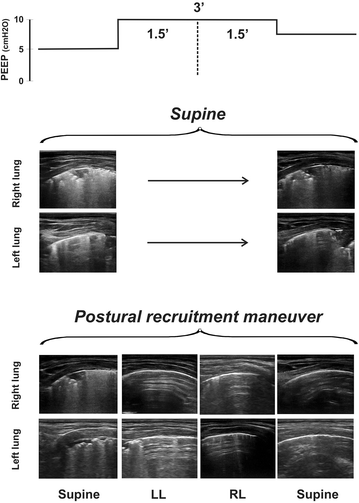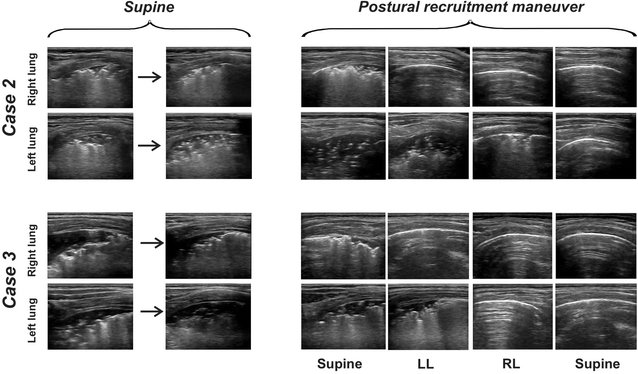Postural lung recruitment assessed by lung ultrasound in mechanically ventilated children
- PMID: 29030754
- PMCID: PMC5640559
- DOI: 10.1186/s13089-017-0073-0
Postural lung recruitment assessed by lung ultrasound in mechanically ventilated children
Abstract
Background: Atelectasis is a common finding in mechanically ventilated children with healthy lungs. This lung collapse cannot be overcome using standard levels of positive end-expiratory pressure (PEEP) and thus for only individualized lung recruitment maneuvers lead to satisfactory therapeutic results. In this short communication, we demonstrate by lung ultrasound images (LUS) the effect of a postural recruitment maneuver (P-RM, i.e., a ventilatory strategy aimed at reaerating atelectasis by changing body position under constant ventilation).
Results: Data was collected in the operating room of the Hospital Privado de Comunidad, Mar del Plata, Argentina. Three anesthetized children undergoing mechanical ventilation at constant settings were sequentially subjected to the following two maneuvers: (1) PEEP trial in the supine position PEEP was increased to 10 cmH2O for 3 min and then decreased to back to baseline. (2) P-RM patient position was changed from supine to the left and then to the right lateral position for 90 s each before returning to supine. The total P-RM procedure took approximately 3 min. LUS in the supine position showed similar atelectasis before and after the PEEP trial. Contrarily, atelectasis disappeared in the non-dependent lung when patients were placed in the lateral positions. Both lungs remained atelectasis free even after returning to the supine position.
Conclusions: We provide LUS images that illustrate the concept and effects of postural recruitment in children. This maneuver has the advantage of achieving recruitment effects without the need to elevate airways pressures.
Keywords: Airways; Anesthesia-induced atelectasis; Children; Lung recruitment; Lung ultrasound; Mechanical ventilation; Outcome; PEEP; Respiration.
Figures



References
LinkOut - more resources
Full Text Sources
Other Literature Sources

